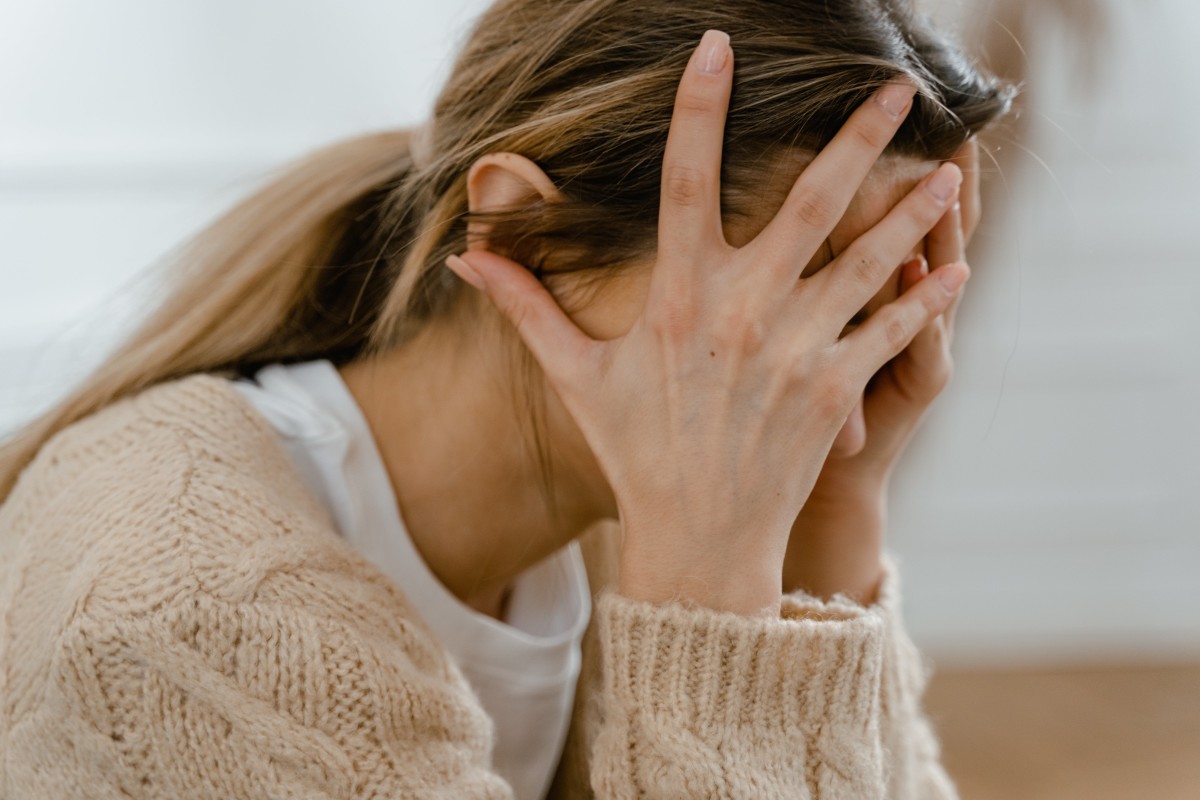Domestic Violence & Its Effects

By Roldens Paulynice
In our daily lives, we may hear about the term domestic violence, but many of us may not know its true meaning. We may think that it only happens when you physically injure your partner. Conversely, that is not entirely true. For those of us who do not know its full meaning, “It is known as intimate partner violence, is a pattern of coercive behavior that is used by one person to gain power and control over another. It may include the use of physical and sexual violence, verbal and emotional abuse, stalking and economic abuse. Sexual, emotional and psychological intimidation may also occur” (The Facts about Domestic Violence in Violence against Women Online Resources). Domestic violence takes place in our society almost every year, and it causes a lot of problems. For example, “Studies report that there are approximately between 750,000 and 2.3 million victims of domestic violence each year… Over 6,000 American families, researchers found that 50 percent of men who frequently assaulted their wives also abused their children.” (Lien). After an abuse, many of us may ask ourselves this following question. Do both the victim and the offender experience troubles? As we will discuss in the succeeding paragraphs, domestic violence causes children, women, or men a lot of troubles, or regularly, if ever, it can also cause our society a lot of problems or deficits. In addition to that, women are not the only victims of domestic violence, but men also are.
Domestic violence can cause children in a family a lot of problems when it occurs. According to Bragg, H lien, “Children who witness domestic abuse and are physically abused demonstrate increased levels of emotional and psychological maladjustment than children who only witness violence and are not abused.” Domestic violence can cause children to be afraid, to have trouble sleeping or have physical symptoms, to feel depressed or worried, to perform poorly in school, to feel dissociated, to drink alcohol or use substance abuses, or to have low energy (Lien). In addition to that, the article titled Long Terms Effect of Domestic Violence shows, “Children get hurt when they see their parents being yelled at, pushed, or hit. They may feel confusion or shame, or think that they caused the problem. Children grow up learning that it's okay to hurt other people or let other people hurt them. A third of all children who see their mothers beaten develop emotional problems. Boys who see their fathers beat their mothers are ten times more likely to be abusive in their adult intimate relationships” (Domestic Violence).
Women who are victims of domestic violence face a lot of troubles. “An estimated 4 million women per year seriously assaulted by an intimate partner during an average year (American Psychological Association, 1996). As a result, they suffer broken bones, bruises, miscarriages, still births, unwanted pregnancies, sexually transmitted diseases, paralysis, deafness, and blindness. In 1994, over 1300 women were murdered by their husbands or boyfriends (U.S. Department of Justice, 1995). In 1997, 29% were killed by husbands or boyfriends,” according to the article titled Domestic Violence-Not Just a Private Tragedy But a Society Effect in Ripple Effect. In addition to that, domestic violence can also affect them psychologically and affect them in other physical ways. Domestic violence causes women to be anxious, have pelvic pain or back pain, be hopeless, be afraid to involve in other intimate relationship, have injuries, such as lesions and cuts, expose them to risk of committing suicide, be unable to focused, or have sleeping troubles (Meyer). According to the article titled Domestic Violence Statistics that was conducted by American Bar Association, Commission on Domestic And Sexual Violence, “Twenty-nine percent of all women who attempt suicide were battered, 37% of battered women have symptoms of depression, 46% have symptoms of anxiety disorder, and 45% experience post-traumatic stress disorder.” Not only can women who are victims of domestic violence experience physical or psychological problems, but they can also face other challenges. “Battered women lose their jobs because of absenteeism due to illness as a result of the violence. Some are abandoned by their church. They have had to forgo financial security during divorce proceedings to avoid further abuse. As a result, they are impoverished as they grow older,” as stated in the article titled Long-Term Effects of Domestic Violence in Domestic Violence.
Some men are also victims of domestic violence, which can have many negative effects on their lives. As stated in the article titled More than 40% of domestic violence victims are male, report reveals, “Data from Home Office statistical bulletins and the British Crime Survey show that men made up about 40% of domestic violence victims each year between 2004-05 and 2008-09, the last year for which figures are available. In 2006-07, men made up 43.4% of all those who had suffered partner abuse in the previous year, which rose to 45.5% in 2007-08 but fell to 37.7% in 2008-09” (Campbell). According to Mayo Clinic Staff in the article titled Domestic violence against men: Know the signs, men who get victimized of domestic violence by women often feel intimidated, embarrassed, or ridiculous, engage in drinking activities, which can cause them to involve in unsafe sexual intercourse, feel anxious and depressed, or even attempt to commit suicide because they realize that as men they are the ones who should be stronger and in power in a relationship, not women.
Domestic violence causes our society a lot of deficits or troubles. In 1995, according to the article titled Costs of Intimate Partner Violence Against Women in the United States that was conducted by Department of Health and Human Services Centers for Disease Control and Prevention National Center for Injury Prevention and Control, “The costs of IPV against women exceed an estimated $5.8 billion .These costs include nearly $4.1 billion in the direct costs of medical care and mental health care and nearly $1.8 billion in the indirect costs of lost productivity and PVLE.The overall total cost estimate of $5.8 billion varies from more than $3.9 billion to more than $7.6 billion. Health care is accounting for nearly $4.1 billion”(Department of Health and Human Services Centers for Disease Control and Prevention National Center for Injury Prevention and Control). The percentage of costs of intimate partner violence against U.S. adult women by victimization type in 1995 was 15.4 percent for homicide, 5.5 percent for rape, 5.9 percent for stalking, 73.2 percent for physical assault. For the percentage of costs of intimate partner violence against U.S. adult women by cost type was 15.4% for homicide lost earnings, 14.8% for lost productivity, and 69.8% for health care. “According to Phaedra Corso, PhD, a CDC economist, ‘ultimately, the economic burden of domestic violence impacts all of society. Hospitals, workplaces, and communities must devote and be able to provide resources to treating and assisting victims, while the criminal justice system, mental health providers, employers and the community must bear a variety of other costs,’”(Longley in Women's Medical Costs Due to Domestic Violence Twice that of Men's: CDC0) . In addition to that, as stated in the article titled Women's Medical Costs Due to Domestic Violence Twice that of Men's: CDC0, “Health care costs associated with each incident of IPV were $948 for women victims and $387 for men victims” (CDO).
In conclusion, domestic violence causes our society and members in many families a lot of troubles. It has many negative effects in the lives of men and women. It affects them psychologically and physically. Many women lose their job due to absenteeism, don’t go to their church anymore, or commit suicide or die. They are more likely to be the victims in domestic violence accident. “85% of domestic violence victims are women” (DOMESTIC VIOLENCE FACTS in National Coalition of Domestic Violence). Women and men often experience many other problems because of domestic violence. Men feel that they are petty when women abuse them, and they even attempt to commit suicide. The children in the families feel so insecure. They think that they are the ones who cause the issue. They also learn from these violence as children, and when they get older, they tend to commit them in their intimate relationship. They realize that it is reasonable for them to be abusive. Domestic violence affects them physically, emotionally, and psychologically. But how does the abuser feel after a domestic violence or after being the one who causes all those problems listed above? What type of problems that he or she may face? What does he or she may do? As stated in the article titled Domestic Violence & Abuse, “The abusive partner lashes out with aggressive, belittling, or violent behavior, feeling guilt, being more worried about the possibility of being caught and facing consequences, trying to regain control and keep the other partner in the relationship, or acting as if nothing has happened, or he may turn on the charm. That may give the victim the hope that his or her partner has really changed.” After one partner get victimized by another one from domestic violence, that can cause society a lot of troubles or deficits. The government has to spend money to take care of the victim. Every year, the government spends billion dollars due to domestic violence. Hospitals, workplaces, communities, the health care system, or the justice system faces a lot of troubles. How can we end domestic violence in our society because it causes our society too many troubles? “The only way to end these cycles of violence is to stand up now as one community and work together to stop the violence. We must educate our children to treat all people with dignity and respect. We must stop avoiding the problems of family violence and stop blaming the victims as somehow being the cause of domestic abuse. This is a community problem that cannot be tolerated any longer,” according to Mike Tupper, Chief of Police, Marshalltown , Times-Republican in the article titled The Impact of Domestic Violence in Our Community. The problem can be decreased but not ended if we call 911 every time that we see that people are fighting or if the partners in an intimate relationship use reasonable or intelligent conversation as a primary tool to show respect toward each other but not a pattern of coercive behavior to show power or control over others.
Works Cited
See. Longley in Women's Medical Costs Due to Domestic Violence Twice that of Men's: CDC0 by Robert Longley
See. The Facts about Domestic Violence in Violence against Women Online Resources)
See. Child Protection in Families Experiencing Domestic Violence in Office on Child and Neglect, Bureau, Caliber Associates. Bragg, H Lien. Year Publish: 2003
See. Long Terms Effect of Domestic Violence in Domestic Violence by Campbell
See. Domestic Violence-Not Just a Private Tragedy But a Society Effect in Ripple Effect
See. Domestic Violence Statistics by American Bar Association, Commission on Domestic And Sexual Violence
See. More than 40% of domestic violence victims are male, report reveals Campaign group Parity claims assaults by wives and girlfriends are often ignored by police and media by Denis Campbell.
See. Mayo Clinic Staff in Domestic violence against men: Know the signs.
See. Costs of Intimate Partner Violence Against Women in the United States by Department of Health and Human Services Centers for Disease Control and Prevention National Center for Injury Prevention and Control
DOMESTIC VIOLENCE FACTS in National Coalition of Domestic Violence
See. Domestic Violence & Abuse in http://www.ucdmc.ucdavis.edu/hr/hrdepts/asap/Documents/Domestic_Violence.pdf
See. Mike Tupper, Chief of Police, Marshalltown, Times-Republican in The Impact of Domestic Violence in Our Community.








